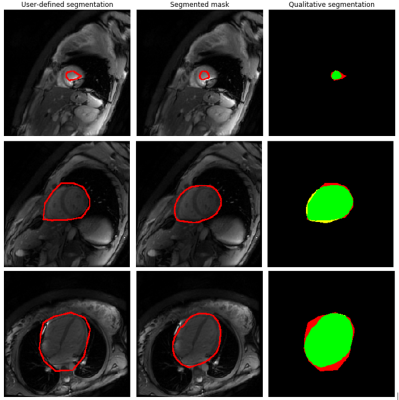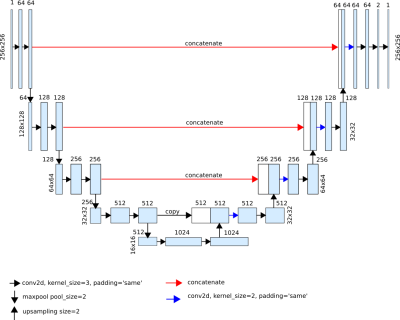María A Iglesias1, Daniel Lorenzatti2, José T Ortiz2, Susanna Prat2, Adelina Doltra2, Rosario J Perea2, Teresa M Caralt2, Oscar Camara1, Gaspar Delso3, and Marta Sitges2
1Universitat Pompeu Fabra, Barcelona, Spain, 2Hospital Clínic de Barcelona, Barcelona, Spain, 3GE Healthcare, Barcelona, Spain
1Universitat Pompeu Fabra, Barcelona, Spain, 2Hospital Clínic de Barcelona, Barcelona, Spain, 3GE Healthcare, Barcelona, Spain
A myocardial tissue segmentation pipeline based on Deep Learning has been implemented and tested on a large clinical database of T1 mapping MOLLI series. Whole heart segmentation was successful, but blood pool segmentation requires additional pre-processing to improve its accuracy.

Figure 2. The first row corresponds to a sample
of blood pool extraction result, the rest to whole-heart identification
results. The first column shows the contours of the user-defined masks used as target
to train the model. The second column corresponds to the contours of the inferred
mask. The third column shows the overlay of both segmentations: in green, true
positives; in red, false negatives and in yellow, false positives.
